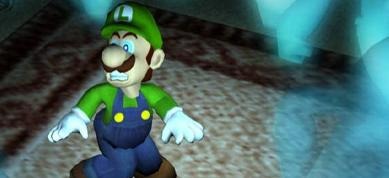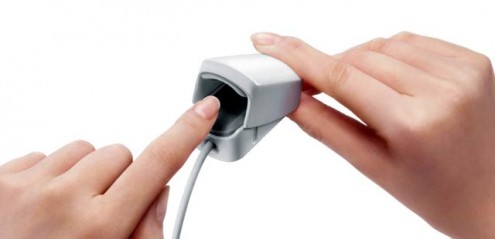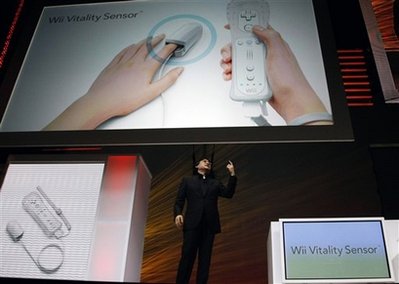
I’m not actually a paid journalist. Go figure. I’m just a Nintendo fan boy with an outlet to talk about video games. I’m actually a University student majoring in psychology. The mysteries of the human body and behavior are like crack to me. I love that stuff. So, naturally the implications of a device that could potentially measure the level of fear was super exciting to me. However, I’ve been thinking about how likely that the vitality sensor will do what they claim it will, and I’ve been itching to take a stab at it ever since. I’m no genius here, but allow me to become the science geek here and teach you a lesson.
The Vitality Sensor is essentially a pulse oximeter attached to your Wii Remote. What is that? It is mainly used to measure the amount of oxygen in your blood, and most in medical use also measure your pulse. My intent is to debunk the marketing jargon and get into the meat of what the crap this thing is.
So what about fear? If we are going to measure fear so we can use it in our video games, we need to know how. On a very simple level, fear one of the manifestations of the fight-or-flight response, in which the body ramps up certain processes when it is threatened (increased breathing, heart rate, blood pressure, increased energy to muscles, etc). It’s your body’s way of getting you out of there. The problem is, these are varry from person to person. An individual who is not very active and has a high blood pressure will have a different heart rate and blood pressure than somebody who is more physically fit.

What does this mean? First off, it means EVERY game that uses the Vitality Sensor will need to calibrate. Not only that, but let’s also consider the fact that when you start the game, you may have just sat down after a long day. Twenty minutes into your game, your heart rate will have decreased significantly, and a new calibration will be necessary to measure your new baseline. You want to recalibrate every ten minutes? Me neither.
Not only that, but the Vitality Sensor is measuring things after the fact. To break it down, to induce fear you have a stimulus and response. The scary game throws something at you (stimulus) and you get spooked (response). All the vitality sensor would contribute to that scenario is acknowledge that you got scared. It can’t force you to be scared.
Also, lets throw a wrench in the wheels: the common cold. You sneeze, blood pressure increases, the game thinks your scared. Sigh…

You see what I’m getting at here? Fear does not equal blood pressure and heart rate. Even if it was, that doesn’t make it a consistent variable long enough to measure it over the period of you playing the game. And even it it were, that would still make for a very difficult game mechanic to implement effectively.
Finally, let’s just consider if we really want a game designed to keep us in a heightened state of physiological arousal. Over-stimulation of the stress response can lead to constipation, anorexia, erectile dysfunction, difficulty urinating, difficulty maintaining sexual arousal, chronic suppression of the immune system, and psychological disorders such as panic disorder. I know some of these seem extreme, but in a world where video game addiction is a real thing, the last thing we need is a game that can give you limp noodle.
Don’t get me wrong, I think that the Vitality Sensor has potential for certain thing. Using it to measure heart rate and blood oxygenation in fitness games is a great idea, and the idea of a relaxing Wii game is cool. I just don’t think we should start kidding ourselves into thinking that this is going to do anything for the Horror genre. Not to mention the fact that Nintendo doesn’t exactly have the best record for using accurate, proper science when measuring and interpreting data, clearly demonstrated by Wii Fit’s use of the Body Mass Index (BMI), which is so inaccurate that many researchers find it not useful in the evaluation of health.
Don’t get your hopes up with this one, kids. Its just not going to be that good.
